If you’ve never heard of Doug Tallamy, think of this as an introduction. If you’ve heard of him, then great, you’re already on this page! Doug Tallamy is a professor in the Department of Entomology and Wildlife Ecology at the University of Delaware, where he has authored eighty research articles and has taught Insect Taxonomy, Behavioral Ecology, Humans and Nature, and other courses for thirty-two years. He is also an author of a handful of great books, including, Nature’s Best Hope: A New Approach to Conservation that Starts in Your Yard and more recently, The Nature of Oaks: The Rich Ecology of Our Most Essential Native Trees. If you care about nature and want to know what you can do to make a difference, both of these books are excellent places to start.
But if you don’t have time to read an entire book, you can also start here, by looking at these three things you can do:
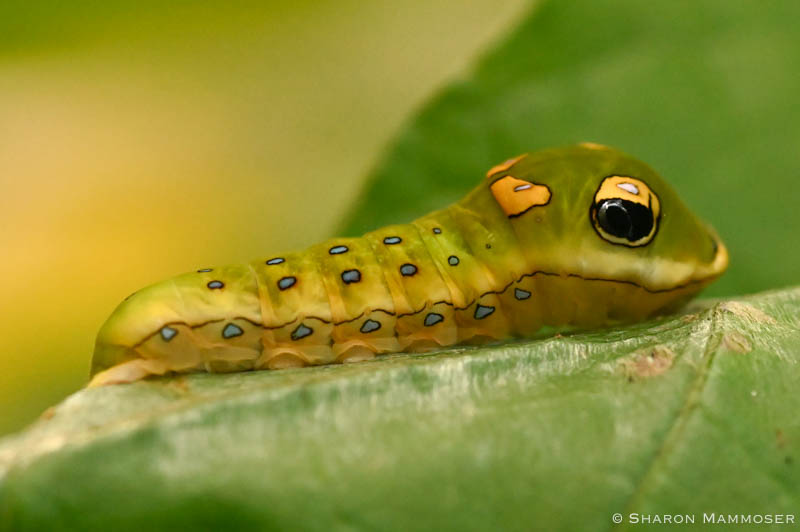
- Plant native trees, grasses and flowers, especially focusing on caterpillars and what they eat. Yes, you read that right. I’m suggesting that when you plant, you choose native plants that caterpillars will find yummy. I know this goes against what you’ve been doing most of your life, but hang in there with me and let me explain. I bet you’ve heard of the monarch butterfly and know that the caterpillar of the monarch feeds exclusively on milkweed. Well did you know that many other insects have evolved alongside of specific plants? Monarchs aren’t the only fussy caterpillars out there! And the reason caterpillars are SO IMPORTANT is because as Doug Tallamy says, “Caterpillars transfer more energy from plants to other animals than any other plant-eaters.”
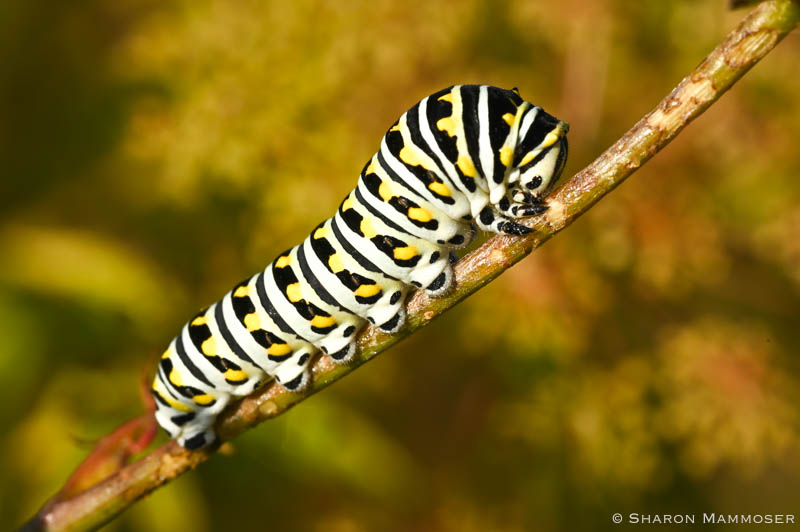
The caterpillar of a black swallowtail.
96% of our songbirds require insects to feed their young.
And caterpillars are the preferred insect for most birds because besides being soft and easy to stuff down the developing chicks’ throat, caterpillars are super nutritional. In fact, of all the insects birds can find, caterpillars are the MOST nutritious. Amazingly, one pair of chickadees feeds their developing brood 6,000- 9,000 caterpillars!! Consider all of the chickadees, blue jays, wrens, cardinals and other birds in your yard that need to feed their babies caterpillars and you can easily see why caterpillars are so important.
So yes, if you want to do the most good for wildlife, one of the things you must do is plant plants that support caterpillars. There are lots and lots of choices and just because it’s native doesn’t mean it can’t be pretty!
If you want to do the most good, the tree that supports the most caterpillars is the trusty OAK. According to Doug Tallamy, “Oaks support 557 species of caterpillars in the mid-Atlantic and over 950 species nationwide.”
And don’t despair if you have a small yard, as Tallamy stresses that there is a native oak for your space– just do a bit of research to find one that will work for you.
A great resource to learn what butterflies go with what food plants is called The Life Cycles of Butterflies: From Egg to Maturity, a Visual Guide to 23 Common Garden Butterflies by Judy Burris & Wayne Richards.
For instance, here are some butterflies and moths and their food plants:
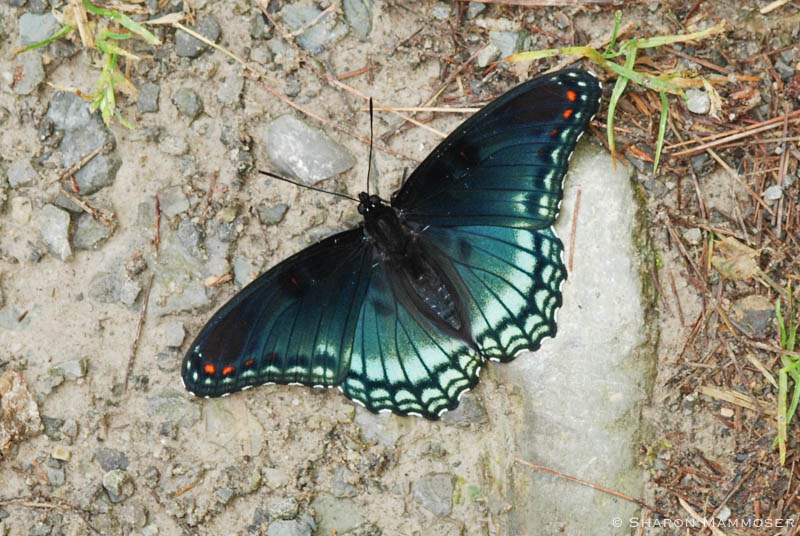
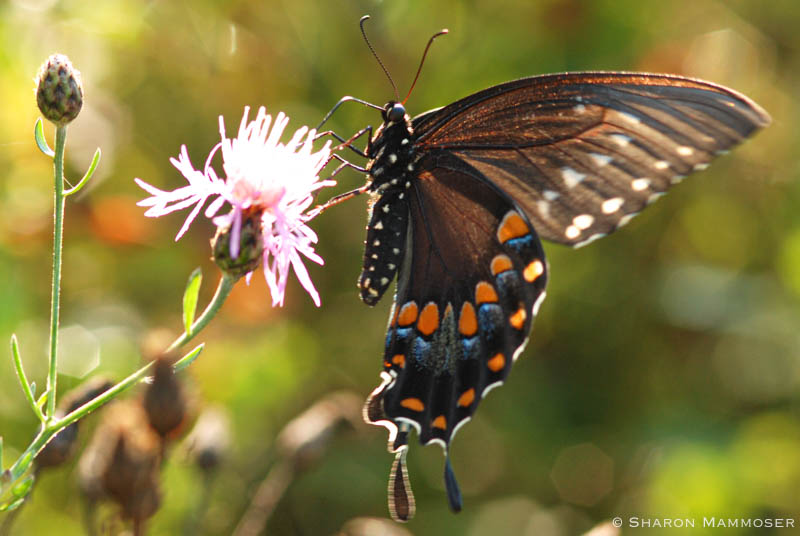
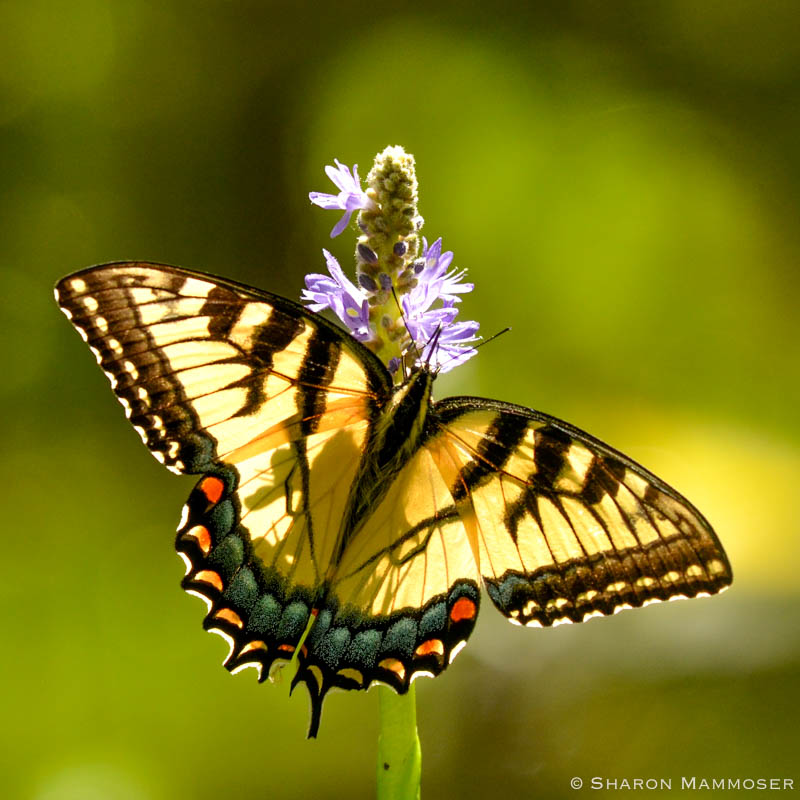
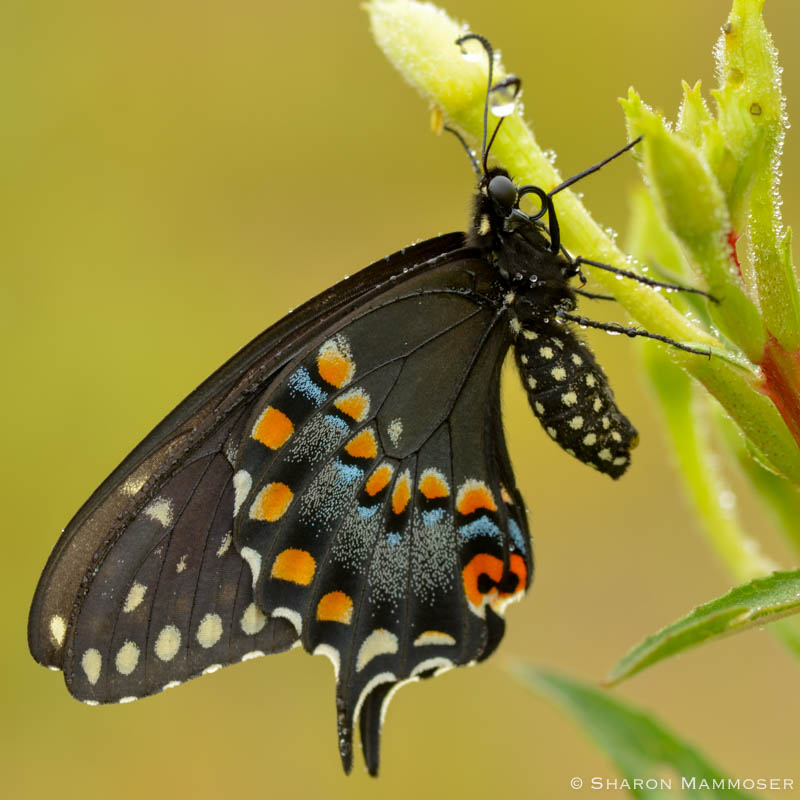
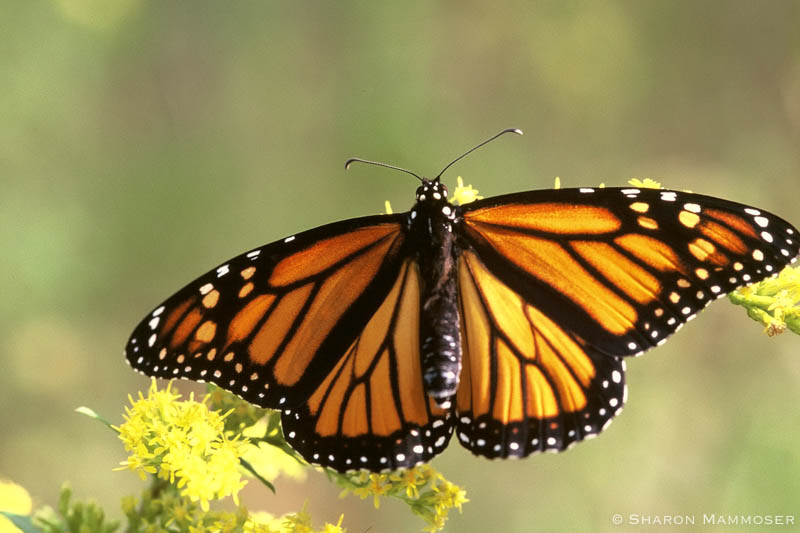
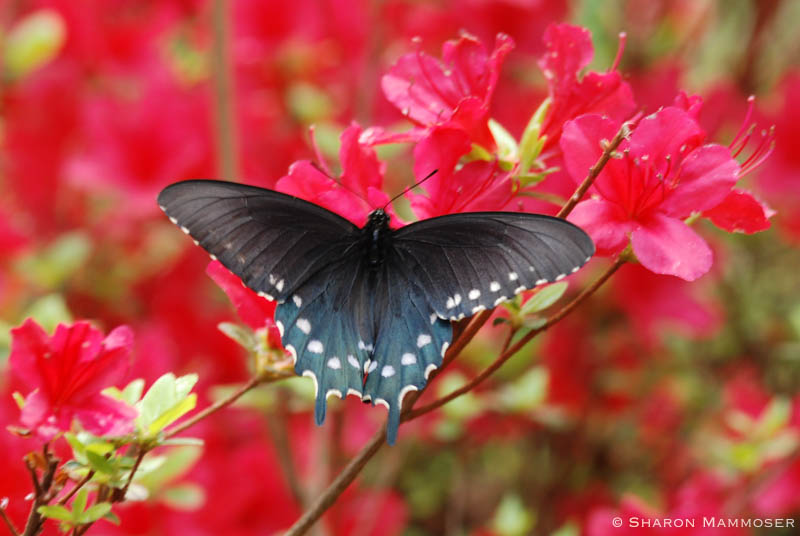
2. Stop thinking that leaf litter is litter. It’s not!!
Leaf litter is very important, as many, many insects and other invertebrates, including firefly larvae, and many moth caterpillars, require leaf litter for part of their lifecycle. Do you like seeing fireflies? Well they MUST have leaf litter!
When we rake and bag and haul off all of our leaf litter, we are vastly limiting the possible biodiversity that our yards can then support. If you live somewhere that won’t let you leave your leaf litter on the ground, consider planting native plant “islands” around in your grass, putting your leaves in those islands. The less you can see the ground, the better off the animals that share your space with you will be. So leave the leaf litter.
Use the idea of a multi-layered yard, where you have some ground cover, then some plants that are 6 inches, 8 inches, 12 inches, etc. The more variety you have, the better. And everything in your yard doesn’t have to be native. But it DOES have to be non-invasive!! As the invasive plants are killing our forests, fields and other wild spaces, choking out the natives and decreasing diversity.
We must stop buying and planting:
English ivy,
burning bush,
nandina (scared bamboo, heavenly bamboo)
mimosa,
privet,
barberry,
Japanese knotweed,
purple loosestrife,
tree of heaven,
autumn olive,
Japanese stilt grass,
multiflora rose,
Oriental bittersweet,
and butterfly bush.
And finally,
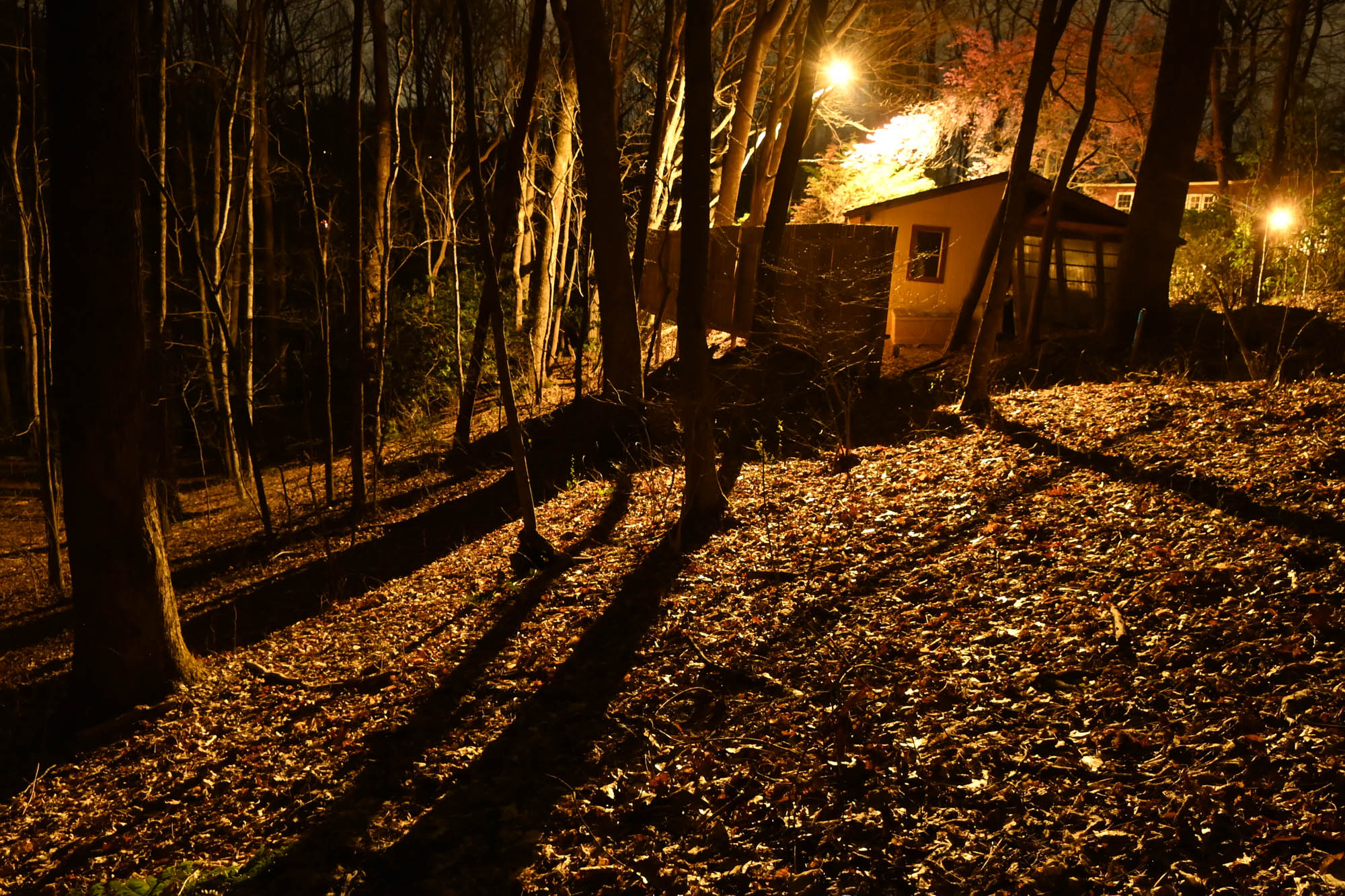
3. Turn off your lights at NIGHT! As the International Dark Sky Association says, “Every day needs a night.” Every living thing on Earth has evolved with hours of day followed by hours of night. Night needs to be dark for many, many animals. Doug Tallamy says, “Light pollution reduces insect populations by exhaustion, collisions, incineration, dehydration, increased predation, blind insects, misdirect oviposition, and disruptions to circadian rhythms, foraging, mating and reproduction.” Want fireflies? Want lots of variety of moths? They all need darkness. Turn your lights off when you’re not outside and using them, or put them on motion sensors. Research has shown that lighting up the area around your house or business with bright and blinding lights does NOT make you safer, as the crooks use the lights to their advantage.
Lights left on all night kill a lot of insects, including moths, which then can’t reproduce and create caterpillars. Less caterpillars mean less birds. And less birds mean less biodiversity and then other animals start to be impacted. It’s all connected!
So Yes, in summary, the three things you can do to support more wildlife are 1. Consider plants that support caterpillars, 2. Leave your leaf litter alone and create less bare ground with multi-layered plantings and 3. Turn off your lights when you’re not using them.
What are your thoughts? Do you think this is possible in your yard? Have you seen a talk by Doug Tallamy near you? As always, I’d love to hear from you! Use the comment box below to join the conversation. Hope to hear from you soon!

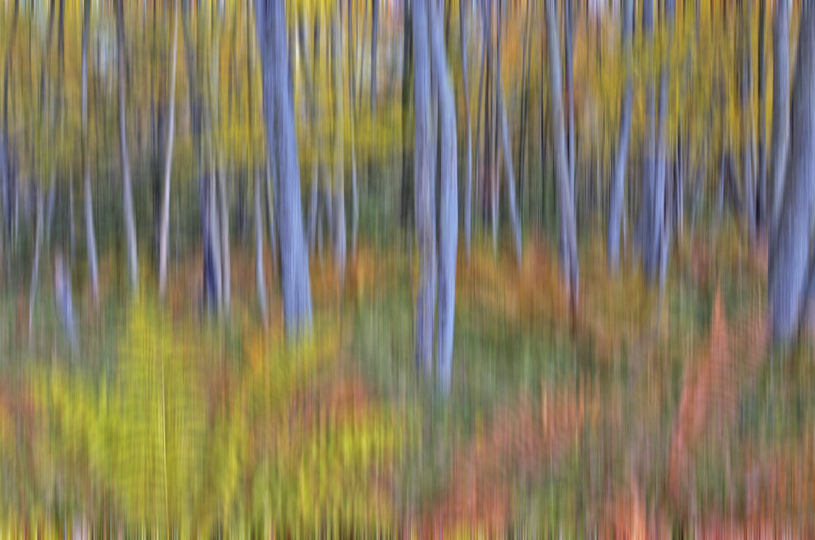
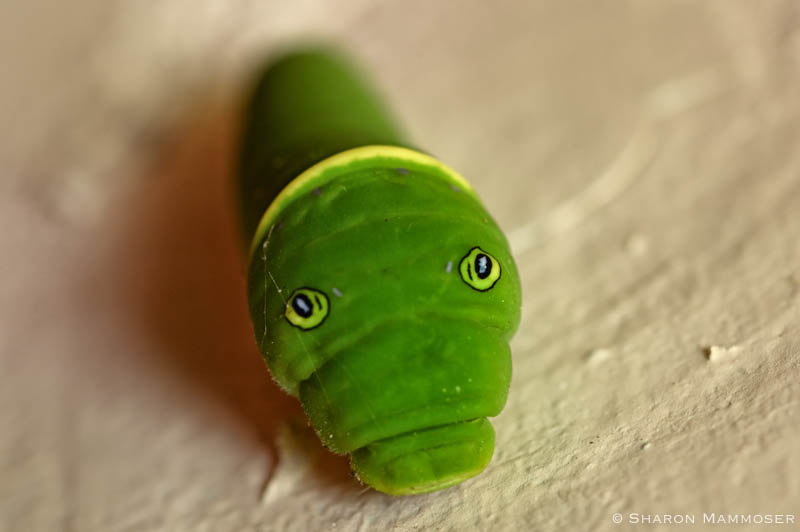
I watched Doug Tallamy’s talk for the first time and I was blown away. Did you know that yards are the best AND EASIEST place to combat climate change and the loss of all those vital birds snd pollinators? I didn’t. But now I’m a believer
I know, Doug Tallamy has so many suggestions for the average person, things that can truly make a difference. I wish everyone could see his presentation! What a different world it would be. Glad to have you on board with the believers who think we all can make a difference. Thanks for reading, and for taking time to comment.
This is a great article, Sharon, and accompanied by your spectacular photos. May I offer a link to your article in our Audubon website/ postings as we are going into our spring season??
Thanks Lisa! Yes, of course on the link sharing. That would be great!! Thanks for asking.